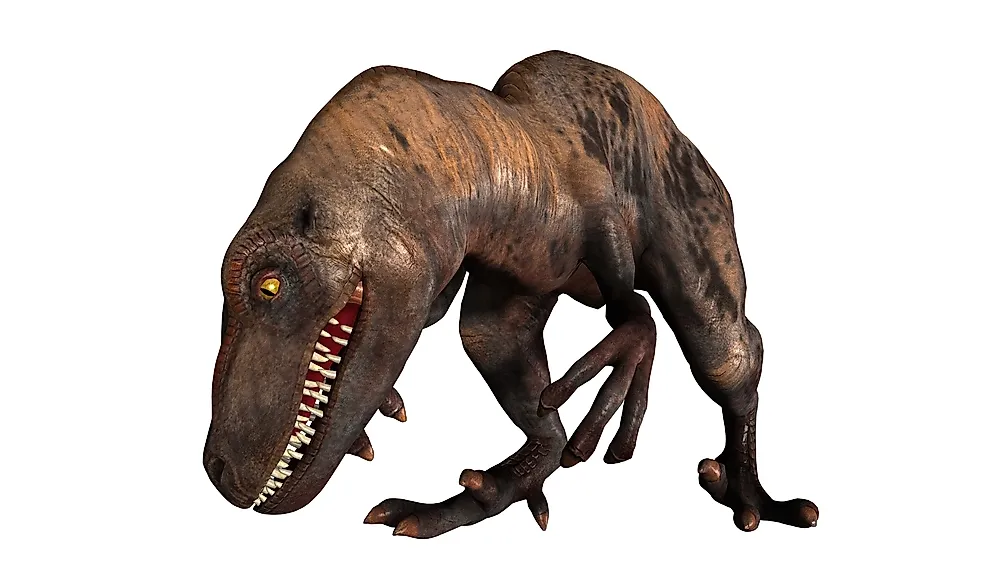Velociraptor Facts: Extinct Animals of the World

The Velociraptor is an extinct member of the dinosaur genera that lived around 75 to 71 million years ago. It was named Velociraptor in 1924 by the then president of the American Museum of National History, Fairfield Osborn. Velociraptor is a name derived from the Latin words "Velox" and “raptor.” Velox means speed while raptor means robbed or plunderer. Currently, only two species of Velociraptor are recognized although there have been others assigned in the past. The two species are Velociraptor mongoliensis and Velociraptor osmolskae named in 2008.
Description
Like most dromaeosaurids, Velociraptor was a bipedal animal with feathers and a long tail. The tail was made up of hard bones fused together and since it was so inflexible, the tail probably helped balance Velociraptor when it was running, jumping, or hunting for prey. Each hind foot of the Velociraptor had an enlarged claw shaped like a sickle. The Velociraptor, however, had a low and long skull reaching ten inches that distinguished it from other dromaeosaurids, it also had an upturned snout that was long and shallow. The snout was made up of about 60% of the entire skull length. It was also smaller in size compared to other dromaeosaurids. Adult Velociraptor grew to about 6.8 feet in length, 1.5 feet tall and 33 pounds in weight. The jaws of Velociraptor had between 26 and 28 teeth spaced on each side. The back side of the teeth was more strongly serrated than the front.
Feeding Habits
Velociraptor was a carnivorous animal that spent most of its time scavenging and preying on small reptiles, mammals, insects, amphibians, and small dinosaurs. Remains of a Velociraptor fighting with protoceratops, a sheep-sized herbivore have been found buried in sand from a sandstorm or falling dune. The two were locked in a deep grip with one of the foot claws of the Velociraptor embedded in the neck of the protoceratops and the protoceratops biting and probably breaking the arm of the Velociraptor. The specimen is widely known as the fighting dinosaur and it is evident that Velociraptor was a carnivore although attacks on large animals were rare. In 2008, another fossil of protoceratops was found with marks marching Velociraptor teeth but also a pair of teeth belonging either to Velociraptor or another dromaeosaurid. Analysis of the protoceratops remains showed that the raptor did not kill the protoceratops but fed on its remains which had little meat.
Fossil Discoveries
On the first expedition of the American Museum of Natural History on August 1923, Peter Kaisen discovered the first Velociraptor fossil on the Outer Mongolian Gobi Desert, and the fossil was that of a crushed skull and a toe claw. The fossils of Velociraptor have been found in Northern China and Gobi Desert in southern Mongolia. The mongoliensis species have been found only in the Djadochta formation in the Mongolian province of Omnogivi. The osmolskae species was found in Bayan Mandahu formation in Mongolia, China. Velociraptor is well known to the general public thanks to the Jurassic Park film directed by Stephen Spielberg. After the Velociraptor was designed in Jurassic Park movies, a raptor skeleton named ‘super slasher’ was discovered in Utah. The skeleton measured five and a half feet tall just like the one designed for the Jurassic Park movie.











